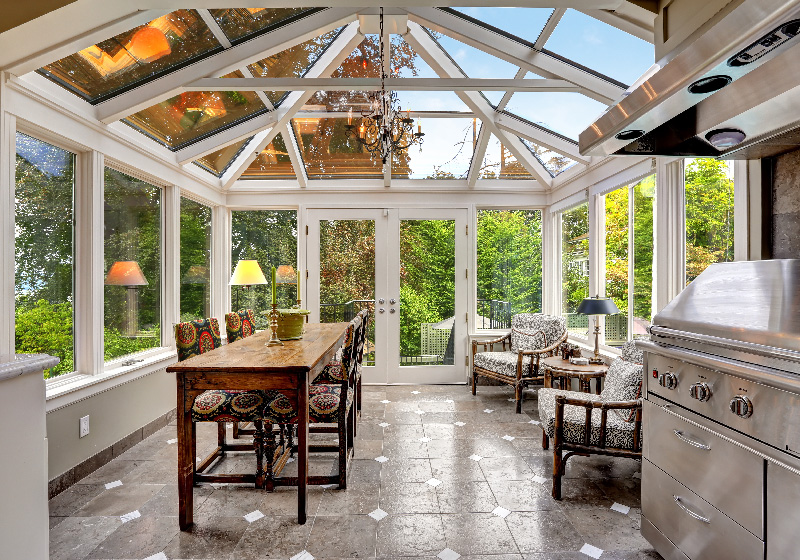Everyone wants to find their dream home. Sometimes, that dream house might be out of reach because of price or location. Other times, that dream house just doesn’t exist – yet!
If your family is expanding beyond their current space, or if changes in your lifestyle require more from your home, the answer may not necessarily be to find a new place to live. Instead, additions are a great way for homeowners to expand their homes into a space that better fits their needs. If you just love your neighborhood or you want to create your dream home without moving, here are the five steps to consider for planning a home addition.
Step 1: Ask Yourself Why You’d Like to Add On to Your Home
While there are many great reasons to plan a home addition, the process comes with its fair share of drawbacks. First is the cost, which can vary widely depending on the type of addition and sometimes even approach the original price of the home. Additionally, the process of building a home addition can take a lot of time, some of which will include moving out temporarily or sharing space with building crews throughout the day.
If you’re considering an addition because you need more space, maybe finishing your attic or basement would be a better route. Both of these spaces can make great home offices, and a basement can be easily configured into a private apartment for guests or for an additional rental income in the future.
Another perfectly valid reason to invest in an addition is to simply improve your quality of life at home. Expand or add a garage for additional parking, build out a sunroom for extra lounging space, or build up an entirely new floor to vastly increase your liveable square footage and increase your ROI. Answering the “why” before you get started can help ensure the addition you imagine will truly satisfy your needs.
Step 2: Determine Your Available Budget
Once you have your mind made up, take some time to determine the budget you’re willing to devote to the project. Total costs vary based on the type of addition, the scale and size, and the materials you’re planning to use, so do your due diligence to get an idea of what your desired addition might cost. When possible, compare costs with homes in your area that are around the same age as yours. Depending on your location, some materials may be harder to come by, and during times when supply chain disruptions are frequent, time delays may need to be considered.
Some homeowners may have enough money set aside to devote to a home improvement project like a home addition, but for others, consider what kind of loans might be available to you. Remember: costs can change even during the build due to unforeseen complications. When possible, it’s best to have a sizeable buffer in case a project goes considerably over budget.
Step 3: Check with Your Local Building Authority
Although you’ll likely check back when your build team is in place, it may be worthwhile to check in with your local build authority to confirm whether your planned addition is even possible. In many areas, building towards the road will have special restrictions, building over important utility access points can lead to major hassle down the line, and zoning laws may dictate how and where additions can be made.
Financially, there is also a high likelihood that you will need to purchase permits based on what you discover here. Factoring in as much as possible early on will give you the best opportunity to set a reasonably accurate budget to help you determine whether an addition is for you. Learn more about how zoning laws might affect your home right here!
Step 4: Contact a Builder, Contractor, or Architect
Finally, when you’re ready to get going it is vitally important to create a home renovation team that you trust. Often, this will mean finding a general contractor who will end up coordinating specialists fit for the job. If possible, prioritize a contractor with previous experience working on home additions – even better if they specialize in your specific type of addition!
Finding the right contractor for you can be tough, so don’t hold back on research during this step. Listen to recommendations from friends and family, look up reviews, and find out how long they’ve been working as a contractor. More experience and a good reputation is usually a great way to establish confidence, but consider how well you might work together, too. Building a home addition is a massive collaborative effort, so if your personalities do not mesh, it could lead to some unnecessary bumps in the road down the line.
After speaking with a couple contractors, you’ll get bids for your addition, project timelines, and opinions on whether they think your plan is feasible within your budget. If not, now is a time to rethink your options and potentially head back to the drawing board. On the other hand, if you find a contractor that seems like a fit with a great bid, you’re off to the races!
Step 5: Consider Any Oversights
Getting started with your addition is exciting, but it’s important to take a moment for last considerations before giving the green light, starting with where you’ll be living during the renovation. Some additions that are minor may allow you and your family to continue living in the home for the entirety of construction, but for some major overhauls, staying with a friend or family member may be the way to go. According to building experts at The Spruce, new additions can sometimes take months to complete, so opting to rent during this time frame will be another expense to add to your budget.
Prior to construction, it may also be smart to order a property inspection to get a lay of your home as it is. A home inspection is the best way to get a summary of a house’s condition and can help homeowners identify urgent repairs before a costly breakdown occurs. With a considerable amount of money dedicated towards a home addition construction, an emergency repair or replacement to the bundle at the same time would be best avoided. Additionally, your inspector can potentially refer you to an electrician or HVAC specialist to advise on whether your current setup will be able to handle the extra space.
Lastly, most homeowners who plan an addition will likely want to stick around for a while, so checking in with the neighbors beforehand as a common courtesy is heavily recommended, especially when an addition presses toward their property. Getting those affected to sign-off on the project early on should help make your home addition plan go as smoothly as possible.
Is a full home addition a bit too extreme at the moment? Read here for some thoughts on starting a little library in your neighborhood! For your next home inspection, contact your local NPI inspector today.



